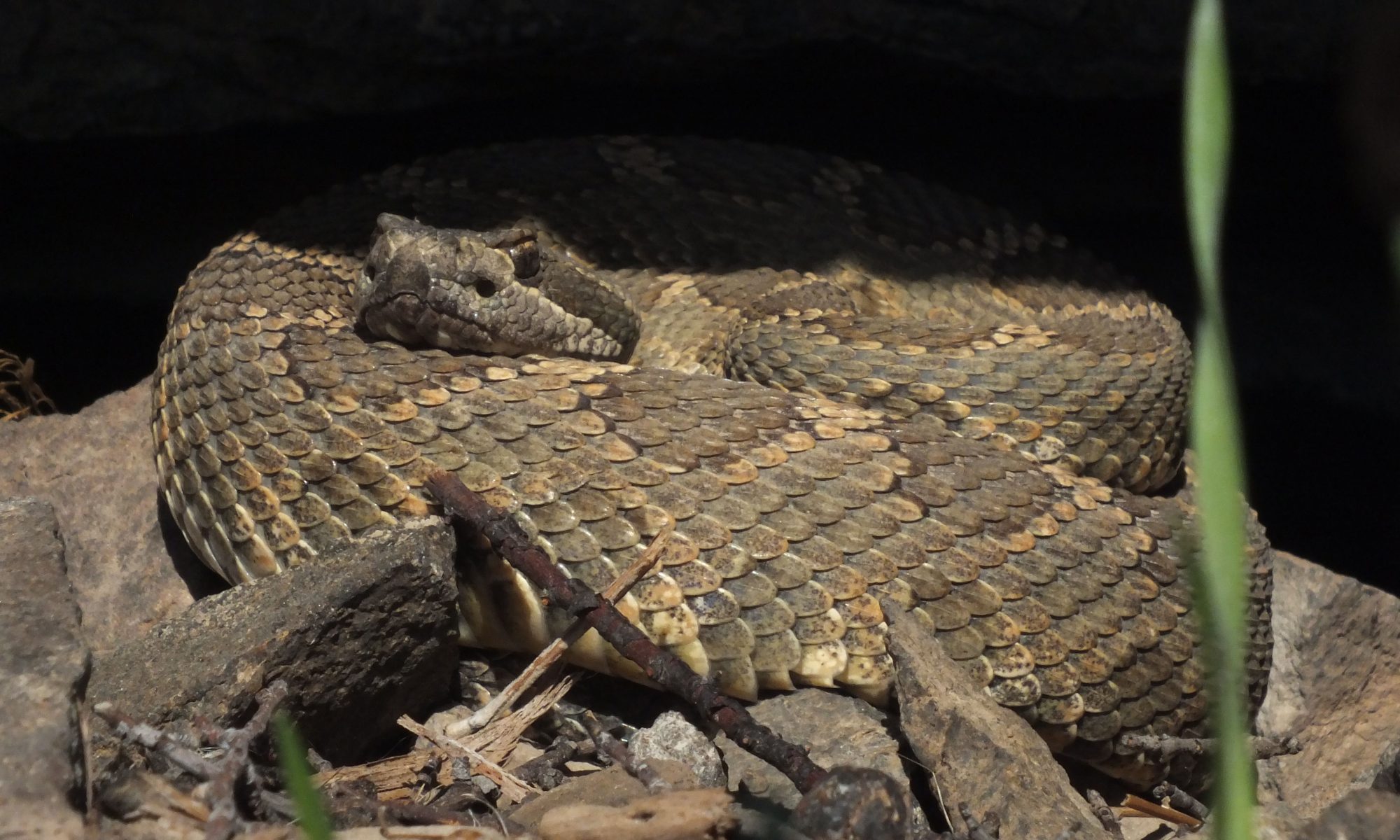Most of the questions I get come from people who are nervous about rattlesnakes. Here are the answers you’re looking for:
Are rattlesnakes poisonous?
Rattlesnakes are not poisonous. This is a common point of confusion. Here’s how I like to sort it out for people who confuse the terms: If an animal is venomous you’ll get sick of he bites you. If he’s poisonous, you’ll get sick if you bite him. Poison Dart frogs secrete a substance that is harmful if ingested, so they are poisonous. Rattlesnakes are safe for predators to eat, but they’re capable of injecting venom. I wish they were poisonous, so people wouldn’t kill and eat them, but sadly, they are venomous, not poisonous.
How can I avoid being bitten?
Rattlesnakes rarely bite humans unless they’re stepped on or handled roughly. One demographic study showed that the majority of rattlesnake bite victims are young adult males with a blood alcohol level above the legal limit for driving. There’s a clear message there. Don’t mess with them. Don’t handle them or try to kill them.
Look before putting your hands under a bush. log, or rock, or on a ledge that you can’t see clearly, Step on logs, not over them. Avoid walking through dense brush or tall grass in shorts or sandals. Use a flashlight when hiking at night. Remember that rattlesnakes feel more secure against walls, and therefore are often found at the base of steps. Look before you step down.
If your pets are allowed to run loose in areas frequented by rattlesnakes, consider having them vaccinated. It will not entirely prevent reaction to the venom but will greatly reduce it.
What should I do if I encounter a rattlesnake while hiking?
Take a photo! Rattlesnakes are generally timid and wary of humans, so you’re fortunate to see one. If you see the snake, just give him a little space and go around him. If you hear him before you see him, stop moving and try to locate him. Rattlesnakes often remain quiet and still, hoping not to be noticed, and then rattle when they’re in immediate danger of being stepped on, so if he’s rattling, he’s likely very close to you. Once you’ve located him, just move out of his space.
What should I do if I’m bitten by a rattlesnake?
The more important question is what you should not do. Don’t panic — the bite may not have injected venom at all and if it did, you have plenty of time to seek medical treatment. Fatalities from rattlesnake bites are almost unheard of and generally happen only when there is an underlying medical condition.
Don’t use a snakebite kit. At best it’s useless but it’s more likely to worsen the damage. With a a couple of species excepted, rattlesnakes’ venom is primarily hemolytic and proteolytic. It damages blood and breaks down tissue, Using suction only helps to keep the venom concentrated at the site of the bite, resulting in increased tissue damage.
Making cuts at the site or applying ice will only cause further injury without serving any purpose. Applying a tourniquet or a tight wrapping may result in the loss of a limb by impeding circulation.
Treat a rattlesnake bite like any other wound. Remove all jewelry or tight clothing from the affected limb. Clean the area gently, cover loosely with a dry sterile dressing to prevent infection, and seek medical assistance.
How far can a rattlesnake strike?
Rattlesnakes can strike about 1/3 to 1/2 of their length. That means that if you’re four feet away, no rattlesnake in the world can bite you.
Are baby rattlesnakes really more dangerous than adults?
Definitely not. The amount of venom they can inject is far less than what an adult can inject, and it’s harder for their fangs to penetrate clothing. However, there are some grains of truth to the myth. Young rattlesnakes are often a little more reactive than adult snakes, and have less control over their venom release. So they may be a little more likely to bite and a little more likely to deliver venom when they do. Also, their venom is chemically a little different , and, in some cases, may contain more neurotoxins than that of an adult, which in most species is primarily hemolytic and proteolytic. But the tiny fangs and low volume of venom mean a bite from a youngster is less dangerous than the bite of an adult.

